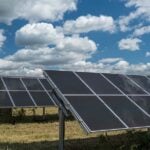Now Reading: PV Price Watch: High inventory levels persist as Chinese polysilicon and wafer prices fall again
-
01
PV Price Watch: High inventory levels persist as Chinese polysilicon and wafer prices fall again
PV Price Watch: High inventory levels persist as Chinese polysilicon and wafer prices fall again
The Silicon Industry Branch released the most recent polysilicon prices on May 14, revealing that while polysilicon companies were engaging in contract signings for moderate volumes this week, prices continued to experience a slight decline. According to the pricing data, n-type recycled material was transacted at RMB36,000–41,000/ton (US$4,994-5,689/ton) – with an average of RMB38,600/ton and a -1.53% week-on-week drop, n-type granular silicon at 35,000–37,000 yuan/ton (average of 36,000 yuan/ton, no change week-on-week), and p-type polysilicon at 30,000–35,000 yuan/ton (average of 31,300 yuan/ton, -3.10% week-on-week).
The primary reasons for the slight decline in polysilicon market prices this week, as noted by the Silicon Industry Branch, are the persistently high inventory levels and the significant drop in downstream product prices. Current supply and demand in the industry are only balanced on a monthly basis, and if downstream production continues to decrease, the polysilicon sector may face monthly inventory accumulation due to the challenges in adjusting production lines.
Furthermore, data from the Silicon Industry Branch revealed that as of the week ending May 15th, two companies had entered maintenance shutdowns, reducing the number of active producers to 11. China’s polysilicon output in April 2025 was 99,100 tons, down 6.08% month-on-month. TrendForce’s latest pricing reports also indicate that Chinese silicon prices have seen a general decline, while wafer prices have been continuously dropping.
In the cell pricing segment, various prices have seen adjustments, with manufacturers engaging in widespread price cuts. The industry outlook suggests that price stabilization is unlikely unless upstream players implement significant production restrictions to address the current demand vacuum in Q2.
The upcoming conference aims to bring together key stakeholders from PV manufacturing, equipment/materials, policy-making, strategy, capital equipment investment, downstream channels, and third-party entities to outline the future of PV manufacturing beyond 2030.




